Have you’ve ever wondered what plants are made up of ?

Plant Cells
Well, if you pulled off a leaf from a plant, and stuck it under a microscope and took a look, you would see PLANT CELLS!
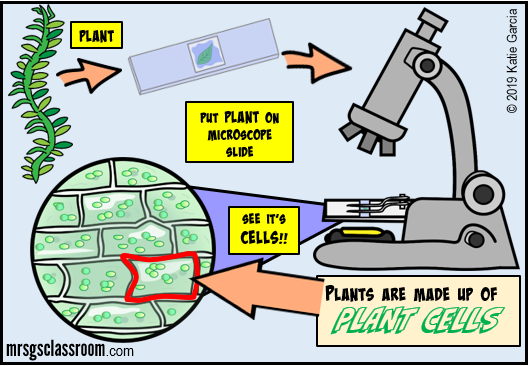
Organelles
Now inside a plant cell, you will find organelles. Organelles are specialized structures that perform specialized tasks in cells. That is why they are often referred to as “little organs” because like organs in living organisms, they complete specific tasks.
Chloroplasts
Now in plant cells, the roundish objects that you can see in the plant cells are chloroplasts. This is where photosynthesis happens! So that is why you see so many chloroplasts in this plant’s cells.

If you recall, photosynthesis is the process where plants take carbon dioxide, sunlight, and water to make sugar (like glucose – which serves as their food) and oxygen. So chloroplasts are used to make food for plants in the form of carbohydrates (sugar).

You can compare a chloroplast to a solar panel!
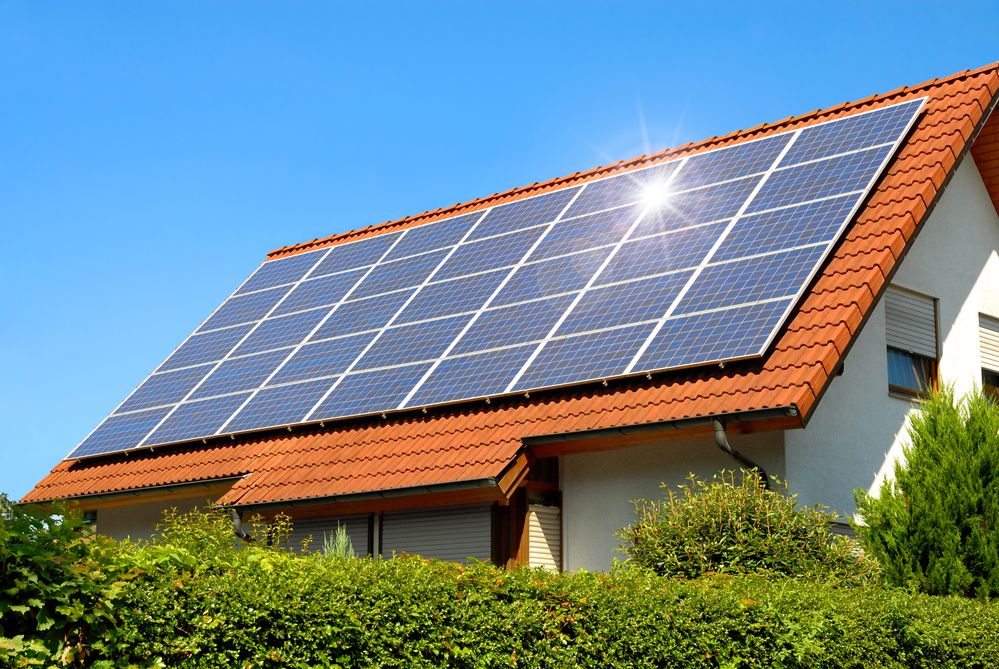
A solar panel is able to take the sun’s solar energy and convert it into electrical energy (like electricity).

Where as a chloroplast takes the sun’s solar energy and converts it into chemical energy (high energy carbohydrates, like the sugar glucose, which is their food).
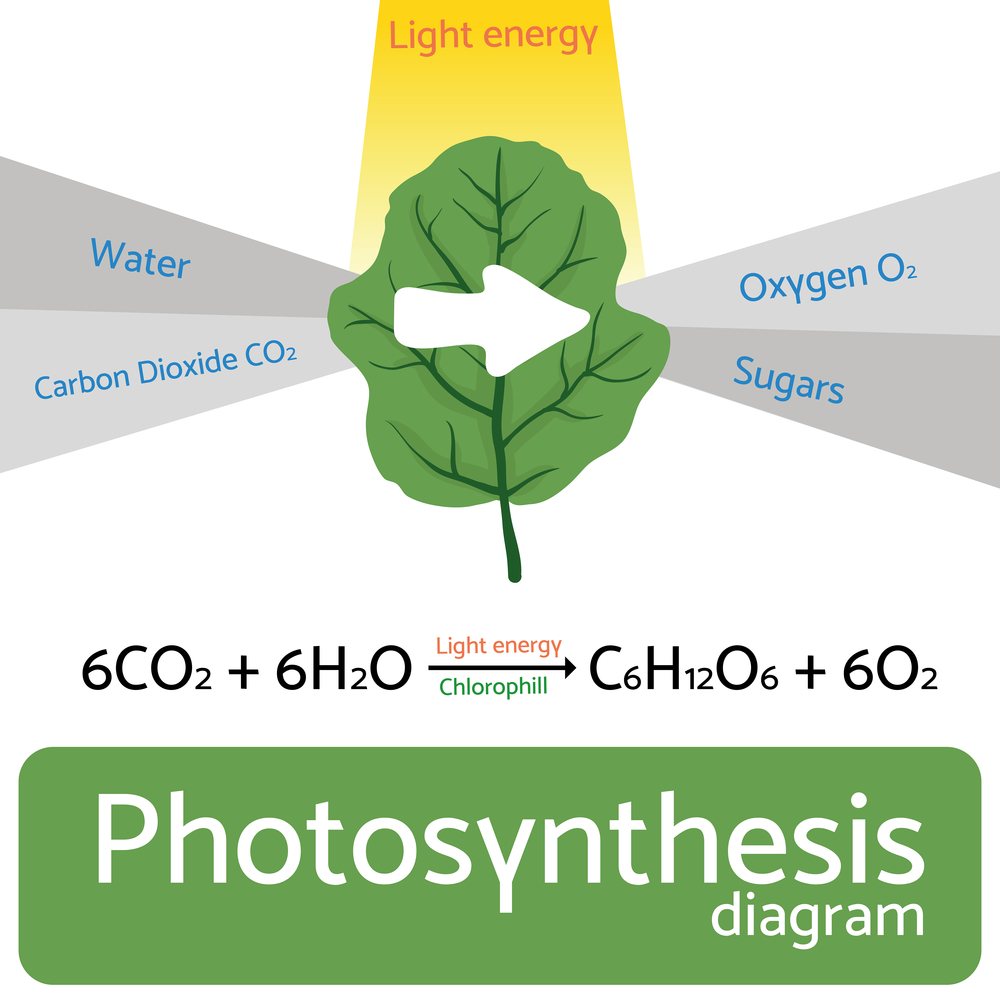
Cell Wall
Now you can see that each plant cell is surrounded by a cell wall, which is a strong, flexible, supporting layer around the cell membrane. The cell wall has many important functions.
For example
- protection – the cell wall surrounds the cells and protects it from physical damage (think about when you buy a product online and it is shipped to you in a cardboard box — the cardboard box protects the item that you are buying and keeps it safe from damage — you can think of a cell wall like this cardboard box because it surrounds the plant cell and protects it from being damaged)

- structural support – the cell wall is composed of cellulose, a special carbohydrate, which helps to make plant’s structure so strong (think about how tall plants can get and how sturdy they can be)
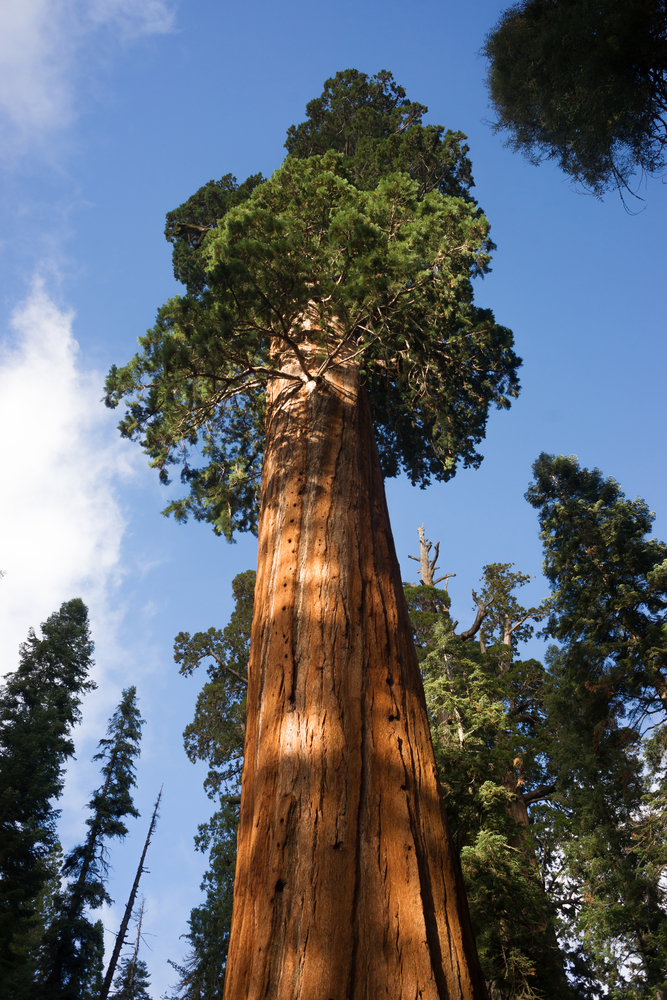
**fun, gross fact – humans cannot digest cellulose…. have you ever ate corn and then looked at your poop? It looks the same way going in as it does going out thanks to our body not being able to digest the cellulose!
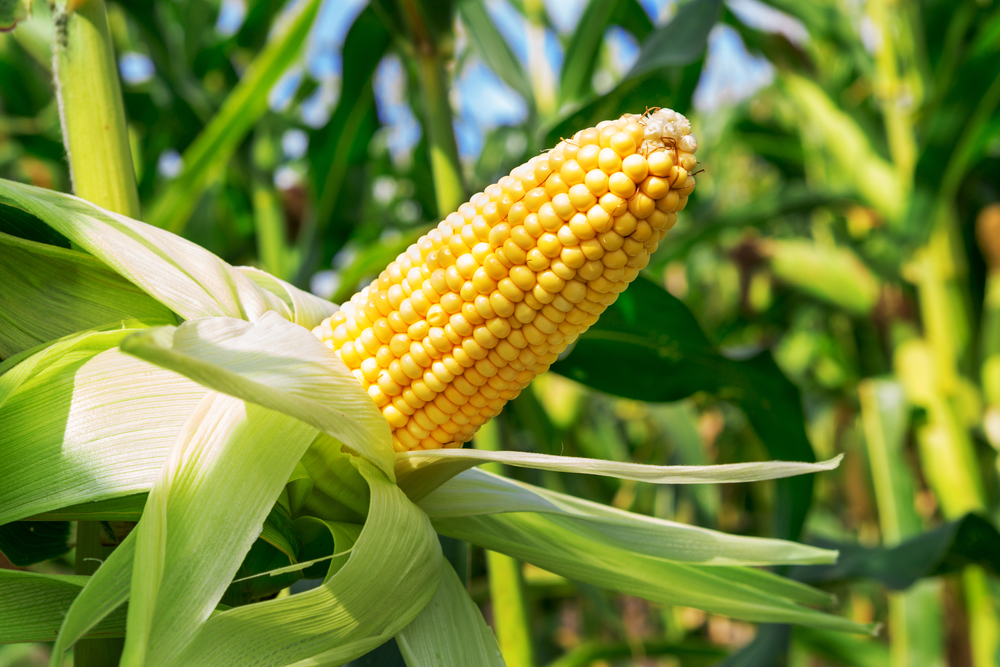
Cell Membrane
Underneath the cell wall, the next layer is the cell membrane. The cell membrane supports/protects the cell and is semi-permeable. Semi-permeable means it allows some things to come in and other things not to come in. So it regulates what enters and leaves the cell (compare it to your skin, skin surrounds your body and protects harmful things, like bacteria, from getting inside your body and hurting you but your skin also allows somethings to come in/out that your body needs).

The cell membrane is amazing if you zoom in and see what it is actually made up of! You will see it contains a phospholipid bilayer with proteins, cholesterol, and carbohydrates chains sprinkled throughout!
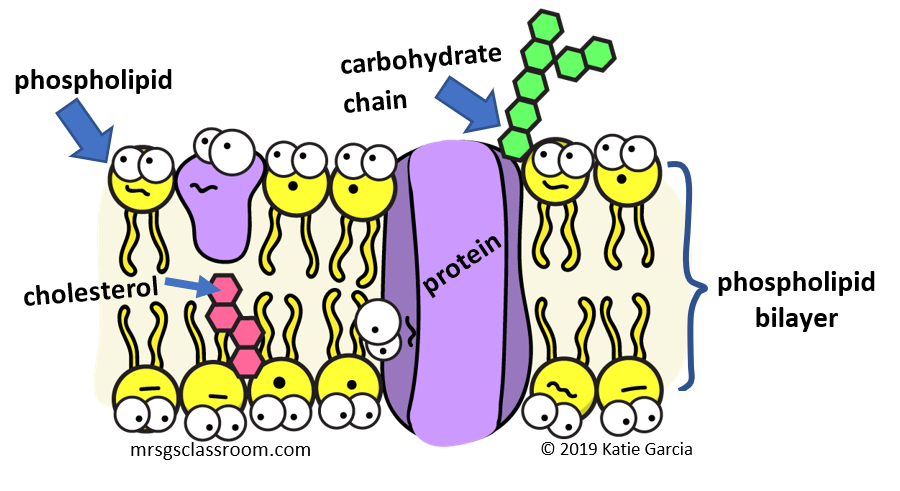
It’s amazing to think that this is your army that is helping to prevent bacteria and other harmful things from getting into your body!

Cytoplasm
Now in every cell, there is a gel-like substance inside the cell. This material is called cytoplasm! This material supports and protect the cell’s organelles (they float around in this material). You can think of the cytoplasm like jello and the floating organelles could be fruit, floating in the jello safely.

Other Organelles in a Plant Cell
Now there are other organelles in a plant cell that you might not see when you look under a microscope. That is because the microscope might not be powerful enough to see the organelles.
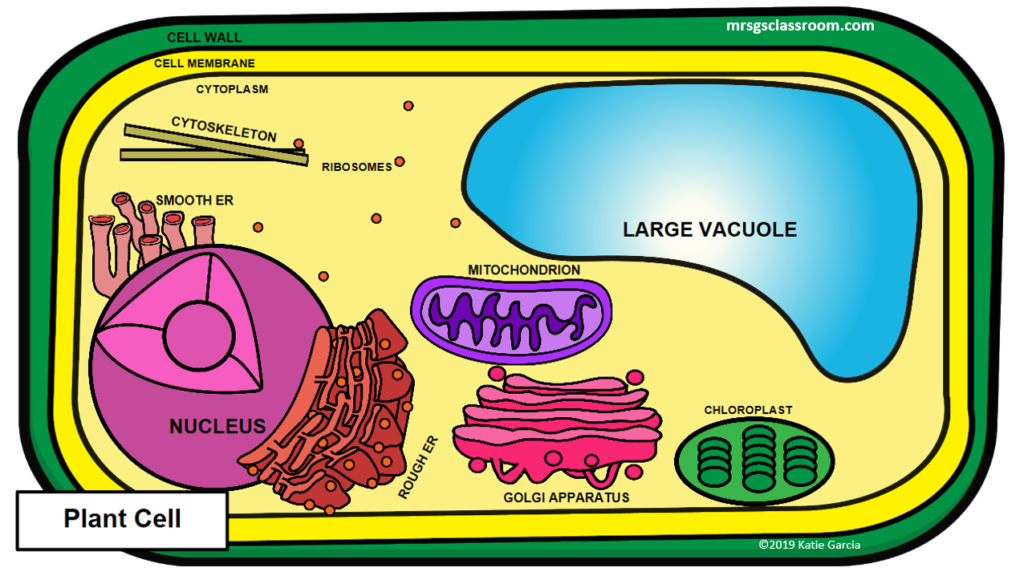
Nucleus
A cell is the smallest, functioning unit of a living organism. Recall that in plants, which are living organisms, the type of cell that they are made up of are plant cells. Each plant cell needs to be controlled to function. What controls plant cells is something called a nucleus. This organelle not only controls the cell’s activities but also contains the cell’s genetic material (which means the cell’s DNA is stored here).

You can think of the nucleus like the boss or the brain of the cell!

Mitochondrion
A cell also needs a organelle that can CREATE ENERGY since a cell needs energy to function. That is what the mitochondrion does. This organelle is the site of aerobic respiration, a process that takes glucose plus oxygen to make lots of energy in the form of ATP.
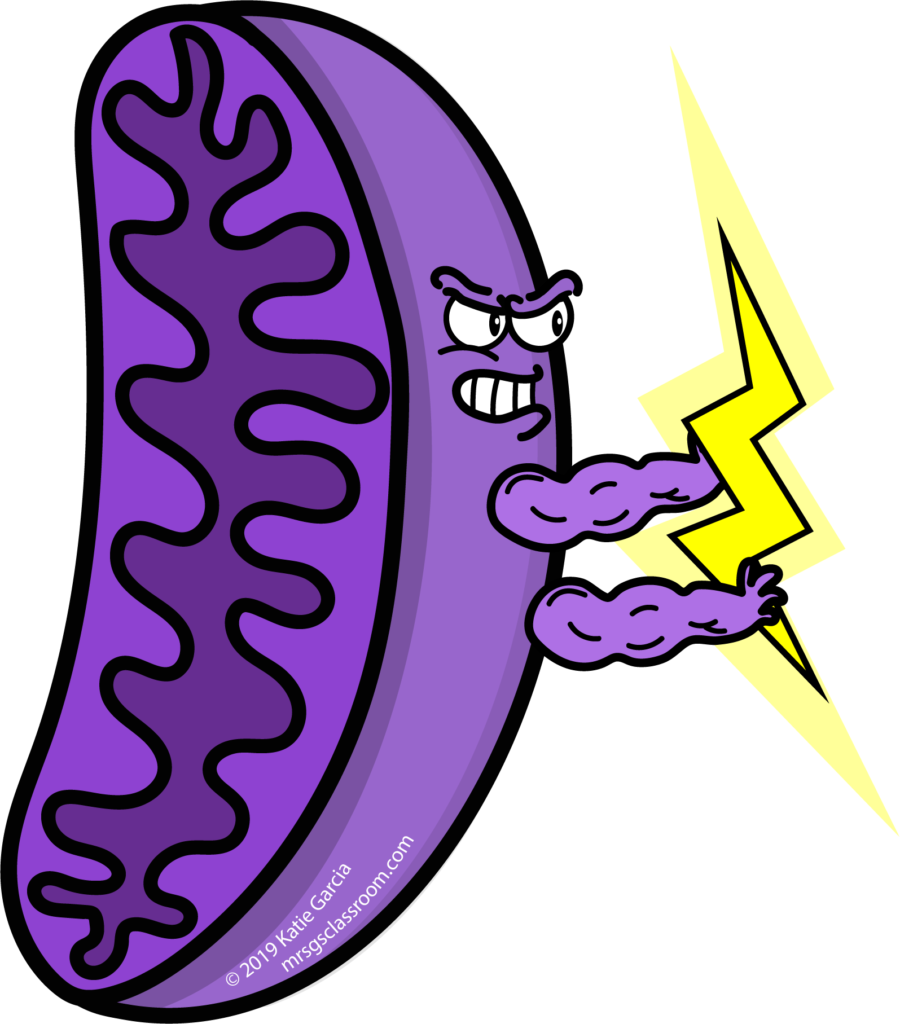
You can think of a mitochondrion like a power plant because it generates energy (electrical energy) you use to power your house (for example, your fridge, washer, dryer, air conditioner, etc). The mitochondrion does the same thing! It generates energy (in the form of ATP) that your cells use to function.

Cytoskeleton
You will also find cytoskeleton in a plant cell. Cytoskeleton helps the cell maintain it’s shape. You can compare it to bones in the human body. For example, if you took out all of the bones, the human body would not hold its shape. This would be the same for a cell if you removed all of its cytoskeleton.

Large Central Vacuole
Now you probably already know that plants need water to survive and grow. Unlike animals that can get up and go drink water — plants can’t do this. So when they come across water (for example, when it rains and the plants can take it up through their roots) they need to have a place to store it. Plants store water in their LARGE central vacuole (so you can think of it like a bottle that stores water for future use). The vacuole also stores salt, proteins, and other carbohydrates the plant needs here.

Ribosomes
Now in plant cells, there are ribosomes. Ribosomes build proteins! If you recall, proteins are everywhere in living organisms and have many functions. Proteins help grow and repair tissue. Most of your hair and nails are made up of proteins. Enzymes are proteins. Enzymes control the rate of important chemical reactions in your body. Proteins are vital to your survival.
Now when I think of a ribosome that actually BUILDS proteins, I think of a kitchen. A kitchen is where you build things (like a salad, sandwich, protein smoothie, or etc) that your body needs to live, survive, and grow.

Endoplasmic Reticulum (Rough & Smooth)
Now cells have to have a way to transport things around the cell. That is where the endoplasmic reticulums come in. There are two types: (1) rough endoplasmic reticulum (RER) and the (2) smooth endoplasmic reticulum (SER). Both of these you can think of like a highway that transport different items.
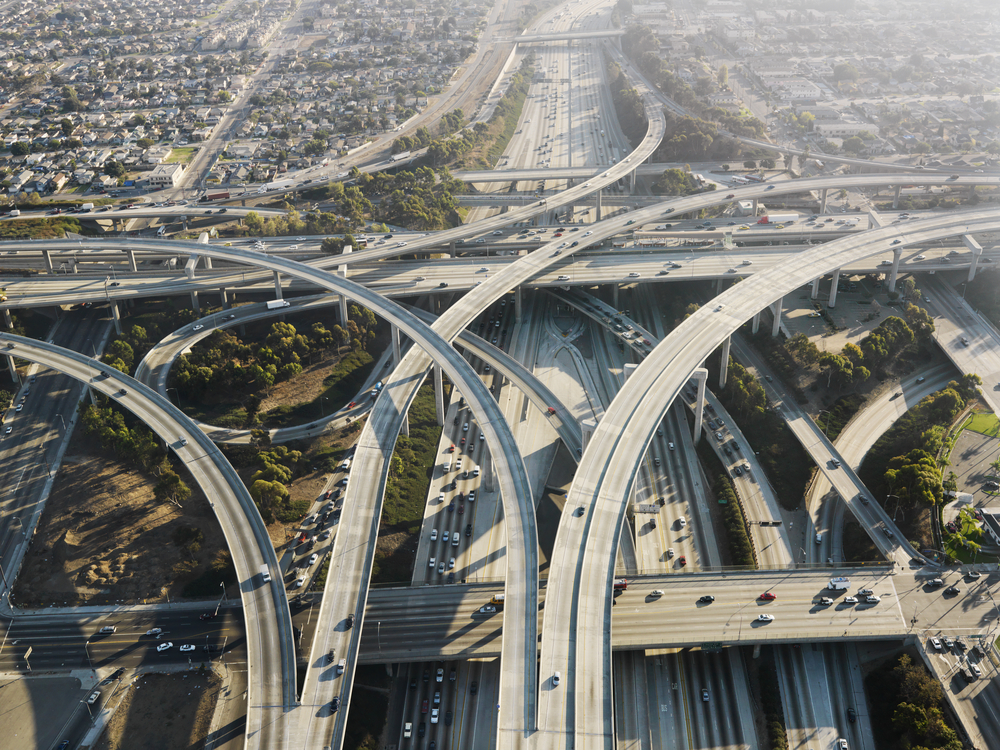
Rough Endoplasmic Reticulum (RER)
Now when you look at the rough endoplasmic reticulum, you probably notice that it has ribosomes on the outside of it. That is why it is called “rough” endoplasmic reticulum, and not “smooth.” Now if you recall, ribosomes are where proteins are made. So you can probably already guess that this organelle’s function deals with proteins, and you are correct. Proteins are synthesized (created) at the ribosomes and then enter the RER, where they may be chemically modified here and then transported to their next destination (in most cases they go to the golgi apparatus next).
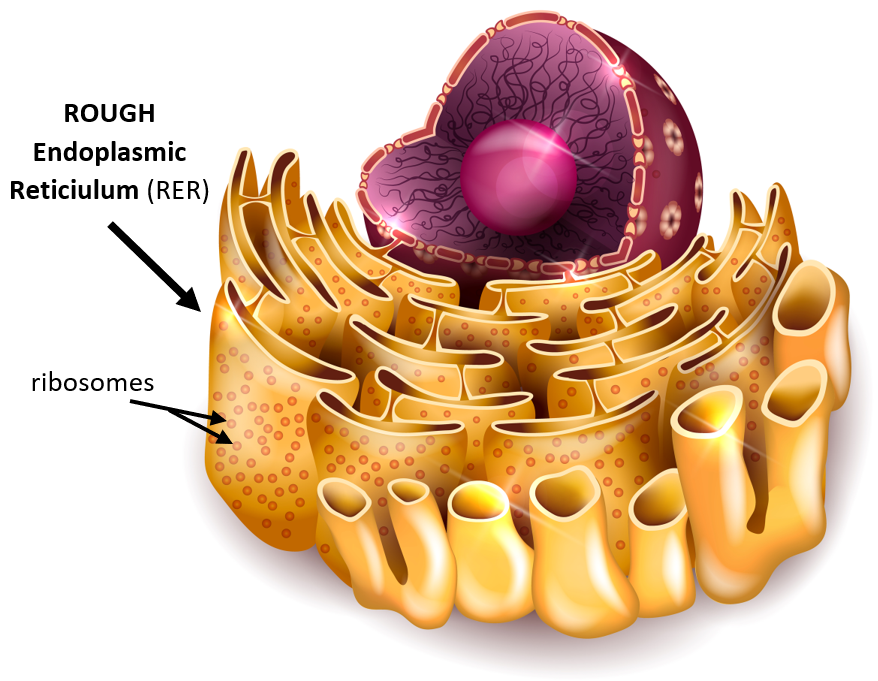
Smooth Endoplasmic Reticulum (SER)
Recall that the smooth endoplasmic reticulum (SER) has no ribosomes on its surface, so it is called, “smooth” endoplasmic reticulum. In many cells that have SER, they contain enzymes that synthesizes membrane lipids, and detoxifies drugs.
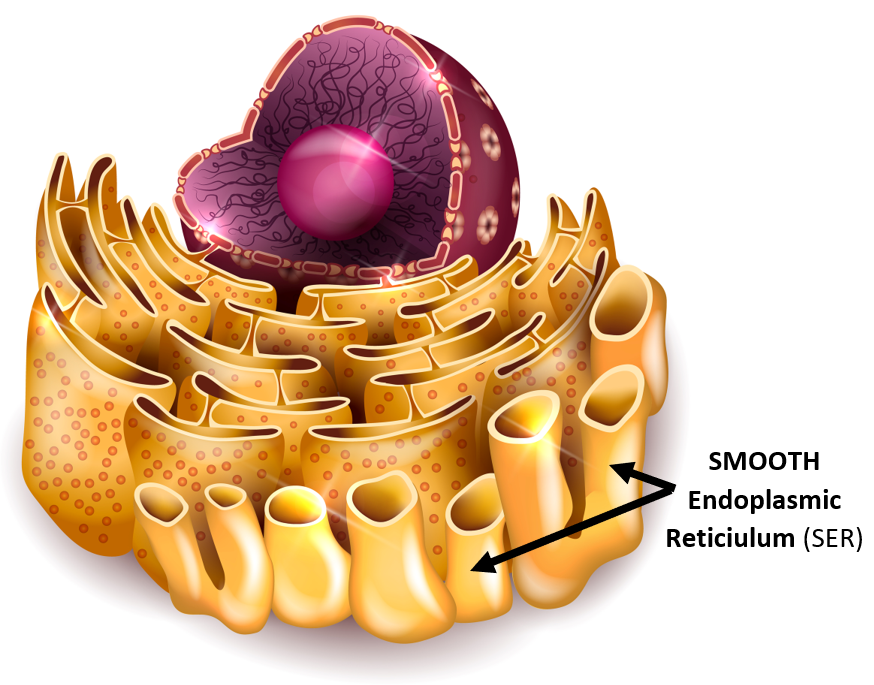
Liver cells tend to have lots of SER. This would make sense because your liver filters your blood by getting rid of toxic substances like chemicals or drugs (remember SER detoxifies drugs).
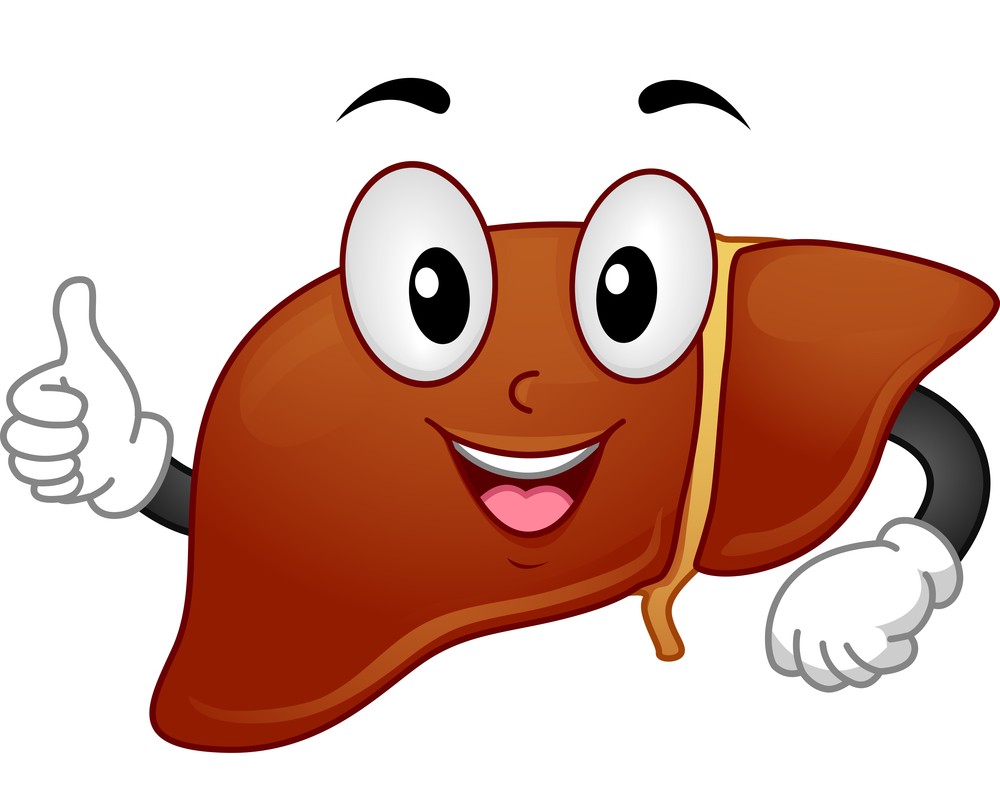
Golgi Apparatus
Proteins made from the rough endoplasmic reticulum will then enter the golgi apparatus to be modified, sorted, and then shipped off to their final destination.

You can think of the golgi apparatus like a post office! The proteins behave just like mail. The post office receives mail then it may modify the mail, sort it, and then ship it off to its final destination.

